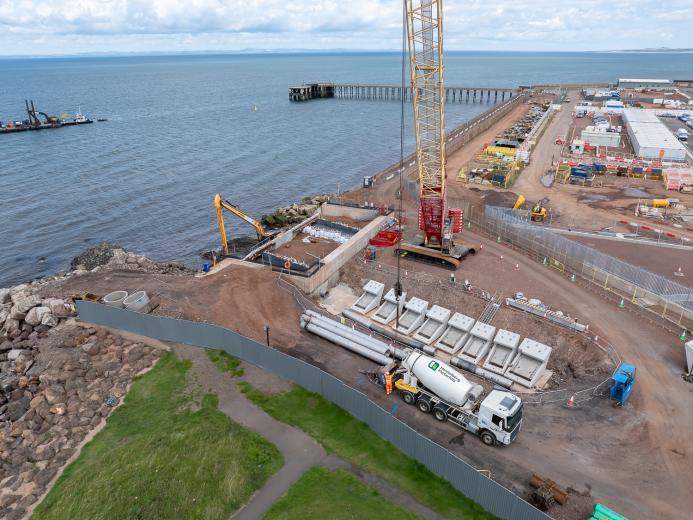PowerCrete boosts cable efficiency at Inch Cape wind farm
Heidelberg Materials UK has supplied its PowerCrete heat-conducting concrete to the landfall connection of the Inch Cape Offshore Wind Farm, helping to maximise the efficiency and capacity of underground power cables.
Set to become one of Scotland’s largest offshore wind farms, Inch Cape will feature 72 turbines located 15 km off the Angus coast and generate enough renewable energy to power 1.6 million homes when fully operational in 2027. Electricity will be transmitted 85 km to a new onshore substation at Cockenzie, East Lothian, before joining the National Grid.
Running power cables underground generates heat, which increases resistance and reduces capacity. PowerCrete, developed by Heidelberg Materials for use in the energy sector, enhances heat dissipation by acting as a thermally conductive bedding and infill material, allowing the system to carry more power safely and efficiently.
For the Inch Cape landfall project, 242 m³ of PowerCrete were supplied from Heidelberg Materials’ Glasgow concrete plant. Deliveries were precisely timed to coincide with tidal windows, requiring close coordination between the company’s operations, logistics, and site teams.
Michael Kelly, commercial manager at Charles Brand, the project’s main contractor, said: “PowerCrete was exactly what we needed for Inch Cape and handled the technical demands of the cable installation really well. The tidal schedule added some complexity but the Heidelberg Materials team coordinated deliveries seamlessly.”
Robert Grant, area general manager at Heidelberg Materials UK, added: “This was a great example of close collaboration between our plant, logistics and site teams. Getting PowerCrete to site on time under tidal constraints demanded sharp planning and communication. It’s rewarding to see our products contribute to such a major renewable energy project.”
The use of PowerCrete supports the decarbonisation of the UK energy sector by improving infrastructure efficiency and demonstrates the role of specialist concrete innovation in supporting the transition to net zero.







